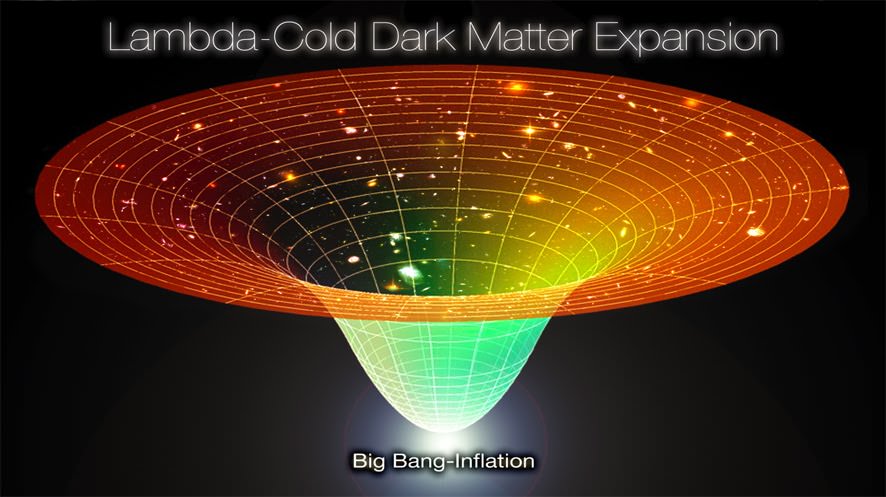[/caption]
The current standard model of the universe, Lambda-Cold Dark Matter, assumes that the universe is expanding in accordance with the geometrical term Lambda – which represents the cosmological constant used in Einstein's general relativity. Lambda might be assumed to represent dark energy, a mysterious force driving what we now know to be an accelerating expansion of space-time. Cold dark matter is then assumed to be the scaffolding that underlies the distribution of visible matter at a large scale across the universe.
But to make any reasonable attempt at modelling how the universe is - and how it unfolded in the past and will unfold in the future – we first have to assume that it is roughly the same everywhere.
This is sometimes called the
Cosmological Principle
which states that when viewed on a sufficiently large scale, the properties of the Universe are the same for all observers. This captures two concepts – that of
isotropy
, which means that the universe looks roughly the same anywhere you (that is
you
) look – and
homogeneity
, which means the properties of the universe look roughly the same for
any
observers anywhere they are and wherever they look. Homogeneity is not something we can expect to ever confirm by observation – so we must assume that the part of the universe we can directly observe is a fair and representative sample of the rest of the universe.
An assessment of isotropy is at least theoretically possible down our past light-cone. In other words, we look out into the universe and receive historical information about how it behaved in the past. We then assume that those parts of the universe we can observe have continued to behave in a consistent and predictable manner up until the present - even though we can't confirm whether this is true until more time has passed. But anything outside our light cone is not something we can expect to ever know about and hence we can only ever assume the universe is homogenous throughout.
[caption id="attachment_84919" align="alignnone" width="580" caption="You occupy a position in space-time from which a proportion of the universe can be observed in your past light cone. You can also shine a torch beam forwards towards a proportion of the future universe - knowing that one day that light beam can reach an object that lies in your future light cone. However, you can never know about anything happening right now at a distant position in space - because it lies on the 'hypersurface of the present'. Credit: Aainsqatsi."]
[/caption]
Maartens
has a go a developing at developing an argument as to why it might be reasonable for us to assume that the universe is homogenous. Essentially, if the universe we can observe shows a consistent level of isotropy over time, this strongly suggests that our bit of the universe has unfolded in a manner consistent with it being a part of a homogenous universe.
The isotropy of the observable universe can be strongly implied if you look out in any direction and find: • consistent matter distribution; • consistent bulk velocities of galaxies and galactic clusters moving away from us via universal expansion. • consistent measurements of angular diameter distance (where objects of the same absolute size look smaller at a greater distance - until a distance of redshift 1.5, when they start looking larger - see
here
); and • consistent gravitational lensing by large scale objects like galactic clusters.
These observations support the assumption that both matter distribution and the underlying space-time geometry of the observable universe is isotropic. If this isotropy is true for all observers then the universe is consistent with the
Friedmann–Lemaître–Robertson–Walker (FLRW) metric
. This would mean it is homogenous, isotropic and
connected
- so you can travel anywhere (
simply connected
) - or it might have wormholes (
multiply connected
) so not only can you travel anywhere, but there are short cuts.
That the observable universe has
always
been isotropic - and is likely to continue being so into the future - is strongly supported by observations of the
cosmic microwave background
, which is isotropic down to a fine scale. If this same isotropy is visible to all observers - then it is likely that the universe has, is and will always be homogenous as well.
Finally,
Maartens
appeals to the
Copernican Principle
– which says that not only are we
not
the center of the universe, but our position is largely arbitrary. In other words, the part of the universe we can observe may well be a fair and representative sample of the wider universe.
Further reading: Maartens
Is the universe homogenous?
 Universe Today
Universe Today
